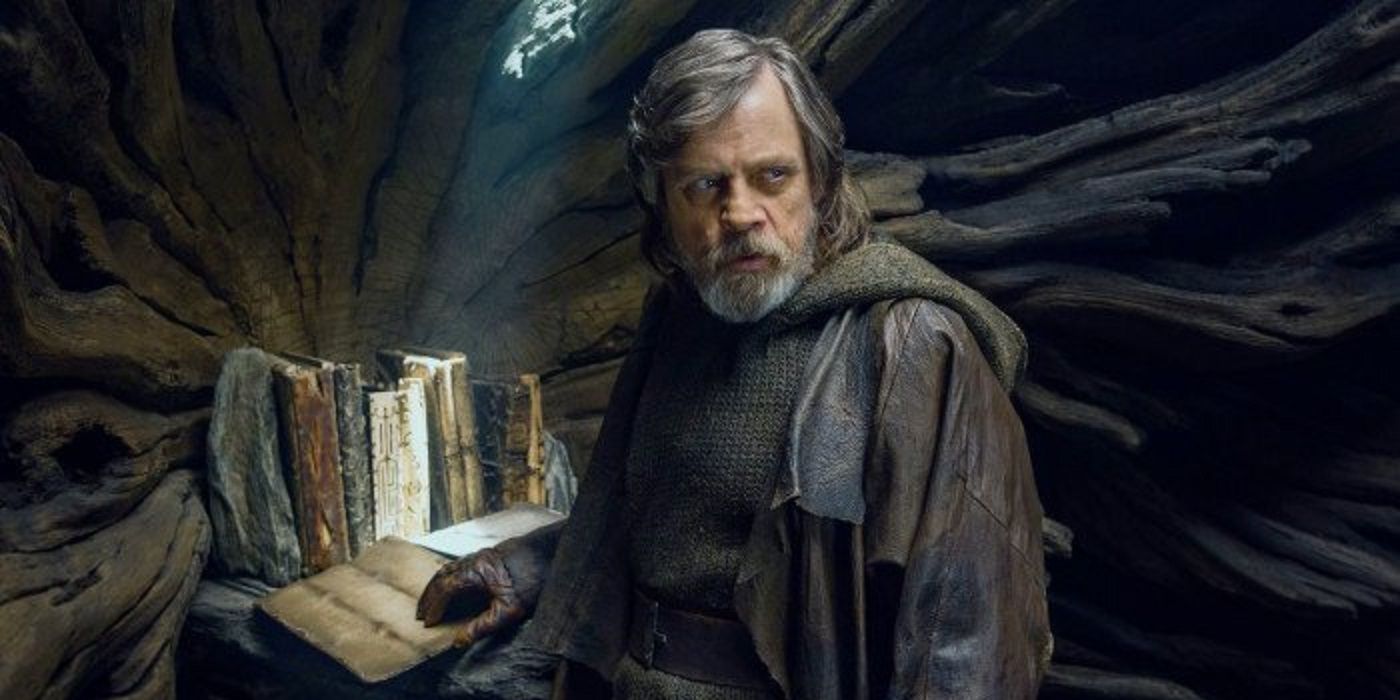Star Wars: Episode VIII – The Last Jedi remains one of the most controversial entries in the Skywalker Saga, dividing the opinions of Star Wars fans. Regardless of its divisive reputation, though, The Last Jedi proved fundamental to establishing the history of the Jedi Order in Disney’s new Star Wars canon. The film brought Mark Hamill’s Luke Skywalker back to the forefront of Star Wars. It found a disillusioned Luke living in solitude among the ruins of the first Jedi Temple on the planet of Ahch-To. Here, as Daisy Ridley’s Rey discovered, Luke had gathered a collection of ancient Jedi texts.The sacred Jedi texts were a significant new addition to the Star Wars saga. For one thing, their introduction marked the first time paper books had been seen in the traditionally paperless universe of the Star Wars movies. But the texts also established that the Jedi religion, like many real-world religions, did indeed draw its beliefs and practices from a set of sacred texts. Unfortunately, neither The Last Jedi nor Star Wars: Episode IX – The Rise of Skywalker provided much insight into the books’ contents. However, other canon sources have explored the sacred Jedi texts a little further, revealing lost knowledge relevant to the Star Wars sequel trilogy and the galaxy far, far away as a whole.Eight Jedi texts are seen stored inside an Uneti tree in The Last Jedi. Rey stumbles across the collection, drawn to it by the Force, shortly after her arrival on Ahch-To. Luke tells her that the cavern inside the tree was built to house the books, which he refers to as “the original Jedi texts,” claiming that he and the texts are now all that remain of the Jedi religion. While the film implies the books have always resided here, the reference book Star Wars: The Last Jedi: The Visual Dictionary confirms that Luke collected the texts himself and brought them back to their home within the Uneti tree.RELATED: Rebels Co-Creator Reveals How He Helped Shape the Disney Era Star Wars Franchise
Star Wars: Episode VIII – The Last Jedi remains one of the most controversial entries in the Skywalker Saga, dividing the opinions of Star Wars fans. Regardless of its divisive reputation, though, The Last Jedi proved fundamental to establishing the history of the Jedi Order in Disney’s new Star Wars canon. The film brought Mark Hamill’s Luke Skywalker back to the forefront of Star Wars. It found a disillusioned Luke living in solitude among the ruins of the first Jedi Temple on the planet of Ahch-To. Here, as Daisy Ridley’s Rey discovered, Luke had gathered a collection of ancient Jedi texts.
The sacred Jedi texts were a significant new addition to the Star Wars saga. For one thing, their introduction marked the first time paper books had been seen in the traditionally paperless universe of the Star Wars movies. But the texts also established that the Jedi religion, like many real-world religions, did indeed draw its beliefs and practices from a set of sacred texts. Unfortunately, neither The Last Jedi nor Star Wars: Episode IX – The Rise of Skywalker provided much insight into the books’ contents. However, other canon sources have explored the sacred Jedi texts a little further, revealing lost knowledge relevant to the Star Wars sequel trilogy and the galaxy far, far away as a whole.
Eight Jedi texts are seen stored inside an Uneti tree in The Last Jedi. Rey stumbles across the collection, drawn to it by the Force, shortly after her arrival on Ahch-To. Luke tells her that the cavern inside the tree was built to house the books, which he refers to as “the original Jedi texts,” claiming that he and the texts are now all that remain of the Jedi religion. While the film implies the books have always resided here, the reference book Star Wars: The Last Jedi: The Visual Dictionary confirms that Luke collected the texts himself and brought them back to their home within the Uneti tree.
#Secret #Knowledge #Luke #Skywalkers #Sacred #Jedi #Texts #Explained
Note:- (Not all news on the site expresses the point of view of the site, but we transmit this news automatically and translate it through programmatic technology on the site and not from a human editor. The content is auto-generated from a syndicated feed.))



